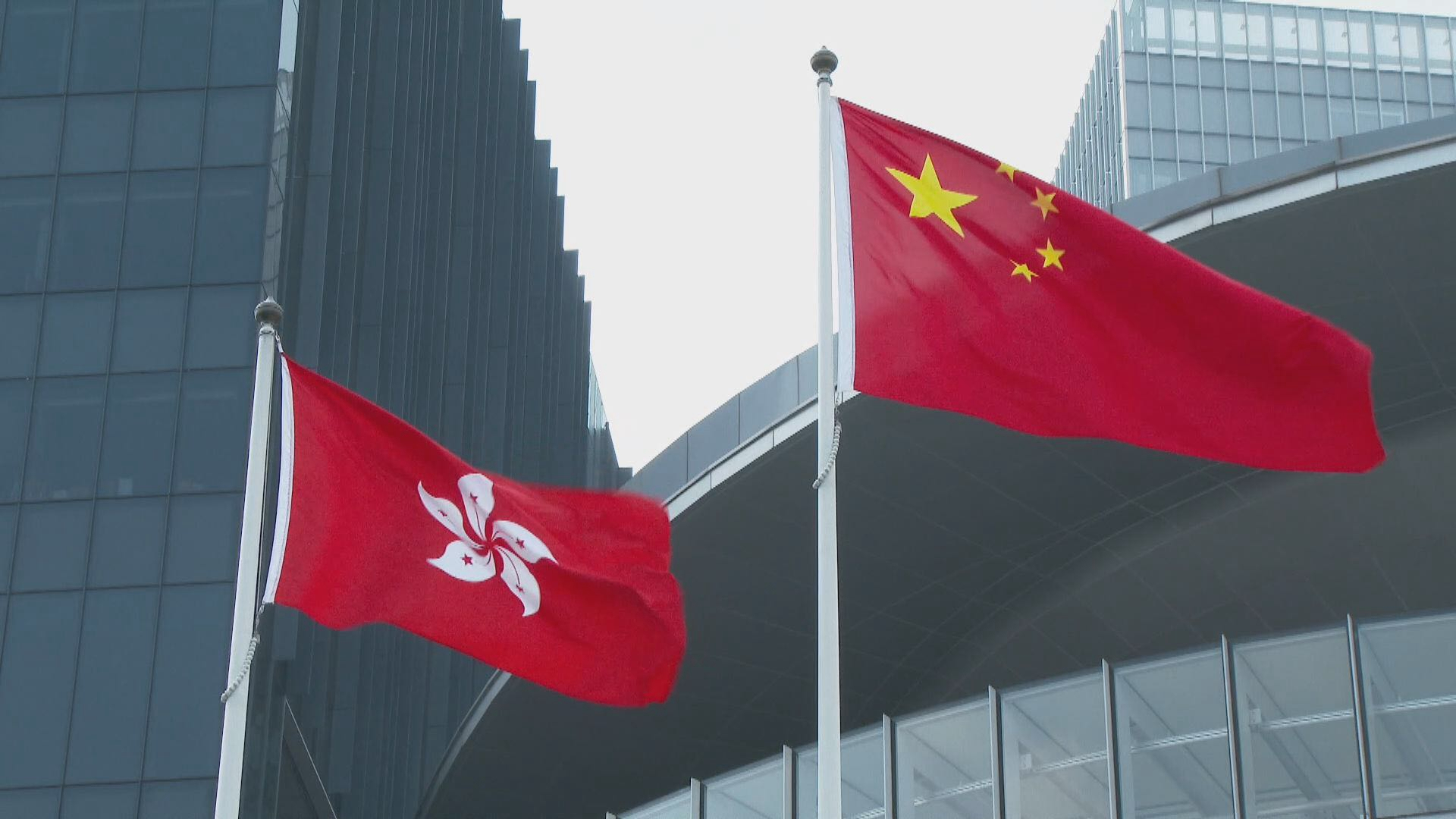

The nature of demonstration in Hong Kong has been totally metamorphosed. Although the Hong Kong Special Administrative Region (HKSAR) government has repeatedly stated that the fugitive bill has been permanently suspended, the radical protesters continue their violence not only against police and the government, but also against civilians.
Some of these radical protesters advocate "Hong Kong Independence," maliciously attacking the police and government buildings and insulting the national flag and emblem. They pose a severe challenge to China’s national sovereignty and the bottom line of the principle of "One Country, Two Systems."
Violence damages national sovereignty

Violent radicals attempt to break and enter the Legislative Council building in Hong Kong, China, July 1, 2019. /Xinhua Photo
Protesters launched the demonstration on June 9 when the HKSAR government tried to pass the fugitive bill which aimed at filling loopholes in the law. The radical protesters later stormed the building of the city’s Legislative Council, blocked its surrounding roads, attacked police with bricks, homemade iron spears and other weapons, injuring 22 police officers in the first several days.
When the HKSAR government declared the death of the fugitive bill on June 21, the violence kept escalating, with rioters shining lasers and pouring oil at police officers, slinging hard objects at officers, throwing bricks and street signs from high places, as well as attacking the police with highly lethal weapons such as bows, arrows and incendiary bombs.
On July 1, a day which should have been a happy anniversary to mark the return of Hong Kong to its motherland and the establishment of the HKSAR government, a group of radical protesters broke into the Legislative Council building, smashing the building's glass walls with iron rods and iron vans, attacking police with toxic chemical powders and unidentified corrosive liquids.
Upon entering the building, they vandalized the assembly hall and the regional emblem, tore up a copy of the Basic Law on the podium, displayed the “dragon and lion” flag symbolizing "Hong Kong Independence," and incited the formation of the so-called "provisional government". All these were a flagrant insult to national dignity.
The situation has only escalated over the following month. Some masked, black-clad radical protesters ripped the national flag from a building and threw it into the sea in Tsim Sha Tsui on August 3. And they also raised a banner with the slogan "Hong Kong Independence," brazenly defying the country's sovereignty.
Violence hurts Hong Kong civilians

Fu Guohao, a journalist from the Beijing-based Global Times was tied up and beaten by protesters at the Hong Kong International Airport, August 13, 2019. /VCG Photo
As the tensions flare up, the radical protesters were no longer satisfied with insulting the national flag and emblem and putting the lives of police officers at risk. The demonstrations have now evolved to overt provocations against local residents and businesses in Hong Kong as well as journalists from the Chinese mainland.
On July 6, protesters staged a so-called "Restore Tuen Mun Park" demonstration, during which they clashed with locals, driving some to hide in public restrooms and wait for nearly two hours. A woman was splashed with liquid and kicked by rioters. A number of local residents complained that the rioters constitute a grave disturbance to the peace of their community.
It's not a particular case aimed at Hong Kong civilians. Some passersby were severely punched and kicked as they took pictures of the faces of rioters during a demonstration in Sheung Shui on July 13. Businesses were acutely affected as a large number of shops close in fear that they would be damaged and ransacked as other cosmetic shops had been.
Reporting by journalists from the mainland has also become difficult. A chief reporter named Chen Xiaoqian from Guangdong TV was asked to present her identification, and was accused of being a fake reporter at a regular press conference two days ago. Earlier, a journalist named Fu Guohao from the Beijing-based Global Times was tied up and beaten by protesters at the Hong Kong International Airport a week ago. Tracing back even further, a female reporter from Hong Kong China News Agency (CNA) was besieged and forced to delete photos.
Violence pushes HK to the brink of falling apart

The violence and chaos endanger the principle of "One Country, Two Systems." /VCG Photo
Looking back at the severe violence in Hong Kong over the past two months, it is not hard to see that the nature of demonstration has deteriorated, as many have pointed out, into a "color revolution."
If the violence and chaos go on unabated, it will not only endanger the lives of Hong Kong residents, but will also destroy the prosperity and stability of the region and the "One Country, Two Systems" principle.
A joint meeting held in Shenzhen by the Hong Kong and Macao Affairs Office of the State Council and the Liaison Office of the Central People's Government in the Hong Kong SAR two weeks ago pointed out that stopping violence, curbing chaos and restoring order in Hong Kong are their overriding priorities.
Violence and insulting national sovereignty are intolerable in all civilized countries. All violence that openly challenges the bottom line of the "One Country, Two Systems" principle, tramples the dignity of the rule of law, undermines social stability and infringes public interests can never escape being punished by the law.
(The piece was translated and edited from a Xinhua article.)

Copyright © 2018 CGTN. Beijing ICP prepared NO.16065310-3
Copyright © 2018 CGTN. Beijing ICP prepared NO.16065310-3